”Receive with simplicity all that happens to you”, or so Rashi, the Jewish mystic sage is alleged to have uttered.It appeared in the opening scene of the film A Serious Man.To which must be addeda Korean student is asking to have an “F” changed to a passing grade and offers Larry, a university physics professor seeking tenure, a bribe to solve the problem; which his moral compass refuses to accept… at that point. What does it all mean? Where is it going? The father of the Korean student adds some sage advice to the earlier Rashi quote : “Accept the mystery.” East meets west and the film covers much holy terrain in between.
” In Joel and Ethan Coen’s A Serious Man, it is a story with many threads and is not disimilar to to Thomas Mann’s Death in Venice and Franz Werfel’s Verdi in Venice. Mortality, death and moral ambiguity are among the themes. In Serious Man the focus on Judaism is so intense, the quest for ecstasy so ardent, that the journey itself leads to a moral ambiguity teeetering towards atheism. The values of the bourgeois Judeo/Christian model are constantly assaulted, bypassed and manipulated while at the same time serving as accepted framework , a launch pad from which to explore more pertinent agendas. Morals per se, are a product in the same fashion as the Columbia record club Larry’s son joins; some freebies to get you hooked and and then a regular dole of selections from which to hang your hat.
Larry Gopnik is intellectually rational and honest, but morally ambivalent. In the same manner as Kubrick’s film ”Eyes Wide Shut” ,he is extremely lucid , but unable to see. He is just there to be used. His own sense of superiority to the outside world is unable to find equal traction in his home life. the resemblence of which is disconnect and dysfunctional. He appears to be diagnosed with cancer at the film”s end and his pilgrimmage from ancestral European shtetl to the promised land provides the sceanrio for his own death in Venice in Minnesota, land of a thousand lakes. Like Mann’s Death in Venice and Kubrick’s Eye Wide Shut, its also Venetian Carnival time as all the characters wear masks, that obscure their schemes behind the useful artifice of middle class morals.
The off kilter advice from the the Rabbi’s is especially provocative. The almost messianic energy of the junior, to the more jaded middle rabbi, to the elder from the old country who understands the zeitgeist of 1967. folklore, myth and archetype define the setting. The prologue scene, an invented Jewish folklore legend where a old man, beleived to be dead and interpreted to be a dybbuk, is stabbed coldly and efficiently by a woman, is a narrative which permeates the film as a wrestling match between the Apollonian ideal and the Dionysus on street level.
A rule in Jewish law holds that when all the judges on the Jewish high court unanimously condemned an accused criminal, he must be set free. The very unanimity was suspicious and called into question the justice of the proceedings. The case of lobbyist Jack Abramoff personifies the type of moral dilemma presented in the film; moral gymnatics and contorsions resulting in permutations and combinations well beyond even the mathematical Gobnick’s capacity for resolution.
By now thousands of published articles, ranging from critical to hateful, have appeared about the famous Jack Abramoff , an Orthodox Jew, former Washington super-lobbyist, product of an affluent Beverly Hills upbringing and future inmate of the Federal Bureau of Prisons. He has pleaded guilty to mail fraud, tax evasion and conspiracy.
”Jack Abramoff is undoubtedly a complex creature. The same man who wrote crudely insulting e-mails about Indian gambling moguls plowed the money he made not into a second home, a yacht or mistresses, but into expensive Jewish enterprises of benefit to others: two idealistic religious schools in the Washington, D.C., suburbs; two money-losing kosher restaurants, intended both as a lobbying venue and as a boon to kosher diners and other Jewish businessmen; and private gifts to needy Jews who came to him with broken hearts and empty wallets. In the early 1990s, he put his work on pause to oversee the creation of the Torah School of Greater Washington, now 12 years in operation and thriving. The high school he started, Eshkol Academy, failed amid acrimony over unpaid salaries as Abramoff’s legal troubles deepened. Abramoff himself told The Jou
he saved nothing and supported himself, his wife and five children from check to check.Although Jewish law asks us to give between 10 percent and 20 percent of net income to charity, Abramoff says, “I incorrectly didn’t follow the mitzvah of giving away at most 20 percent. I gave away everything. I was the softest touch in town.” This mingling of money and faith and the ambition to outdo your rival is a necessary currency around which Serious Man evolves. It is omnipresent, melancholy and gloomy and in the film is always situated between myth, nightmare and a harbinger of death.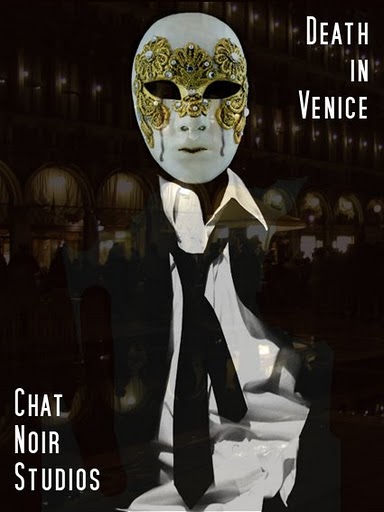
In Death in Venice, Thomas Mann could not know that the central character, Aschenbach, and his failure to commuincate his indifference to human life, and his willingness to relinquish a rational, dignified existence for aestheticism and intoxication would anticipate the rational enthusiasm for war in 1914; war that defined the destiny of Germany leading towards the barbarism to culminate later. In Serious man, despite the humanist pretense, there is an indifference to life.As Gopnik becomes enmeshed in legal dilemma, the lawyers and service industry see him as a floundering carp in a bucket.It is as if excessive bourgeois moral judgment leads to this indifference; the necessity to renounce behavior that can destroy bourgeois repectability is limited by the strength of what one is willing to preserve. And appearances, though superficial do run deep.
Death in Venice does not proclaim the end of bourgeois humanism, the victory of decadence and nihilism over order and form. After all, the voice of rationality, represented by the narrator, provides a counterbalance to Aschenbach’s self destruction and surrender to the chaos. Rather, Death in Venice expresses a warning against destructive forces and against irresponsibility of art; which is also the Rabbi’s message to the Bar Mitzvah boy at the end of the film Serious Man; the elder seems to say that art can conjure up these destructive forces, but it can also side with reason and dignity. There is always this wrestling between the irresponsible and individualistic and the morally and socially responsible whatever label one gives to it be it classicism versus modernism. Death in Venice strived for an equilibrium of sensuality and morality, the Dionysian and Apollonian as inevitably being forced to coexist as in a contrapuntal arrangement in Bach’s Goldberg variations or the music of Mozart. There is always an element of uncertainty as to whether it is the devil that is in the details or God.
The antagonist in the fictionalized world of Death In Venice and Serious Man was not the political and economic systems, but life itself. It had shattered the bourgeois, regimented existence of Gopnik and for Mann , many of his characters, among them Gustav Aschenbach. The gaze of the Coen brothers in Serious Man, and Mann inevitably focus on the sexual and moral politics when casting doubt on the bourgeois world. The Coen’s Gopnik and Mann’s point of view share similarities on conflict being a war of opposing intellectual principles. There is a juxtaposition between civilization and culture, and the comedic, though sometimes tragic, rests on the incongruity of the two.
It is culture against civilization. For Mann, a war of a morally oriented Germany against politically oriented nations, for him primarily epitomized by France. For Gopnik, Jewish culture in the new world, the wilds of the midwest. What Mann sought from World War One in his essay ”Thoughts in War” was not liberation from Germany’s authoritarian political structure and Germany’s way into civilization, but Germany’s cultural reorientation toward form, structure, and dignity; in other words a deliverance from an irrational, irresponsible world of self-destruction,and decadence of the sort to which Aschenbach in Death In Venice had submitted himself.
Gopnik and his perfect mathematical world, holds no doubts and is an idealized Judaism of the meat and potatoes variety; based on the notion of Judaism being a culture and what Mann would term the principles of unity, style, form, dignity, taste and a certain intellectual organization of the world. The Jefferson Airplane, the social undercurrents of his neighbor, Shamsky, and her ”new values” are representative of civilization. That is, the rational, enlightenment,appeasement, skepticism, dissolution and intellect within the Thomas Mann framework.
Mann was no doubt influenced, held and swayed in a seductive slow dance with Wagner’s romantic fascination for death, Schopenhauers pessimism and nihilism and above all, Nietzsche’s unmasking and radical questioning of bourgeois morality and life, particularly his criticism of the bourgeois work ethic and pursuit of success. The same can be said of the Coen’s, whose clinical detachment wanders between the ambivalent, ambiguous and a demonstration of irony towards both sides that recall Mann’s ”Reflections”, a rambling and disjointed 600 page epic released as Germany crumbled at the end WWI. Ultimately both artists show a tenderness and love for the mediocre, everyday world of bourgeois existence and not for the strong and extreme doses of life in Nietzsche’s Dionysian world.
However, this love of reality, is ironically somewhat melancholic, rather gloomy and sometimes brutal especially verbally and psychologically in Serious Man. The relationship to reality struggles to find an intimate and happy form that does not need to thrive on ironic nihilistic detachment. Mann felt, in his ”Reflections” that democracy with its humanism and ideology would be antithetical to intellectual and artistic freedom in some way akin to this hermetic world of the Coen’s where the Jewish world is a fortress awaiting the inevitable assault of the Woodstock generation scaling its walls.
In Werfel’s ”Verdi: A Novel of the Opera” the aging composer has come to Venice in 1882 in order to resume work on a King Lear opera after a dry spell which has lasted a decade. Verdi’s fame has been overshadowed by Wagner who is also in Venice. Verdi realizes he is not in Venice to work but to meet Wagner face to face and he disposes of his Lear manuscript in his fireplace. After two accidental and anonymous encounters, he goes to Wagner’s residence and on arriving realizes that the composer had died a few minutes earlier. Verdi’s inner freedom and artistic forces then gradually return to him.
The long lasting creative crisis due to an inability to come to terms with Wagner’s work was invention, a literary fiction to fix Verdi as an artist of the people; part of Werfel’s examination of Expressionism and a division of Verdi representing civilization and Wagner that of Culture. In fact, Veridi’s later works such as Otello and Falstaff were sophisticated and complex and certainly not the kind of music to be whistled and sung by the masses on the street. Werfel’s novel was expressionist only insofar as it dealt with the concept of art and the artist with the portrayal of Verdi as an archetype of expressionism, being an artist in crisis whose inspiration has failed and is resigned to this fact.
It is the classical Italian opera of Verdi in triumph over the new Wagnerian development which is the music as drama. A preservation of tradition in Verdi, but an art form developed to its highest point. It is independent vocal melody over the orchestral symphony, pure singling style over dramatic declamation, and the aria over the leitmotiv. Verdi wins. Wagner is seen as the abstract and destructive rather than the aesthetic. Romanticism as the background to Wagner, thus imbuing the music with a narcotic nature, that is neurotic as to its very roots. Wagner’s insistence upon obedience and submission as unnatural with regard to the law of nature.
The sin of Wagner is leaving the laws of classical harmony and composing the ”modern” based on abstract theory, and sensation rather than aesthetic pleasure. Greater abstraction is seen by Werfel as the spirituality of Romanticism with Wagner being the link to modernism, to symbolism and finally to the limits of tonality.In A Serious Man, these same battles rage, with all the characters having vary degrees of committment to the ideas of modernity while trying to preserve tradition. Oddly, the only two characters who question the usefulness of their lives and of their existence is Gopnik’s troubled brother and the the old, almost eternal looking rabbi who in their own lonely way search for God among the details.


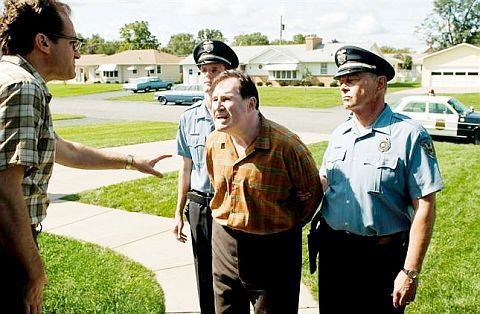
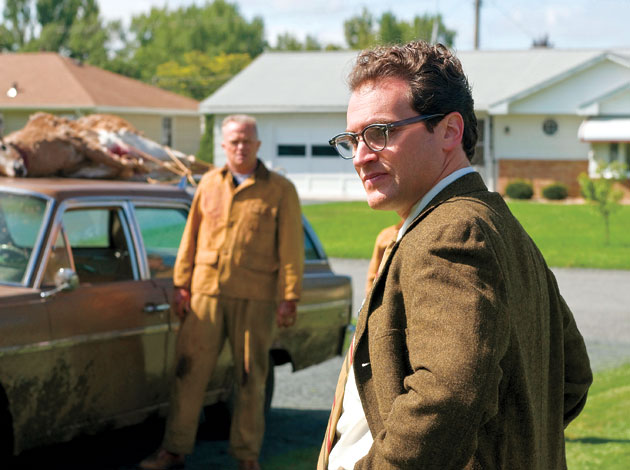

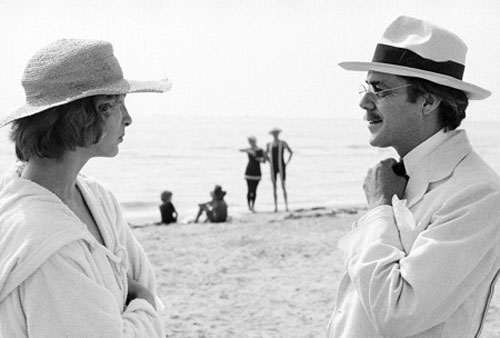
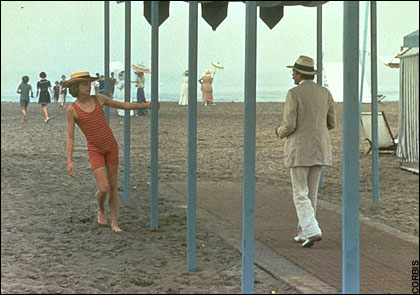
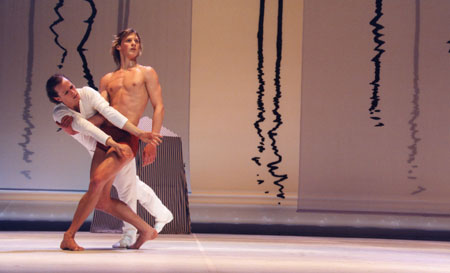
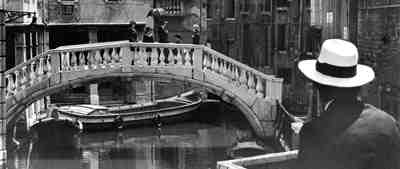

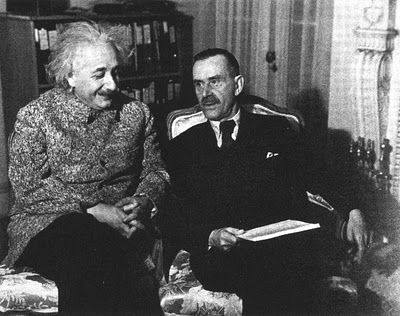



 COMMENTS
COMMENTS
Excellent as in excelling many previous categories of performance! Thanks Dave!
Now, towards tradition, without detachment or irony, in a post modern form with affection for and sympathy with the modern. O, for “an intimate and happy [and sustainable (or living) form]!” Great generally aesthetic description of Wagner’s sin. Again Deleuze & Guattari re painting; anticipating and generating sensation “for effects that bring down the house” – Auden is not compatible with or appropriate to seriousness in or of theory.
I must see the film! The mere attempt to seriously show a number of characters wrestling with modernity from various traditional postures is admirable. Since i began to flit about the Twitter scene at the turn of the year i have encountered a lot of zenlike and buddhist postures and some admixed with aesthetic, social, economic or political theory. The idea that Ego and ID – both representational values presented by and addressed in the “mind stuff” – are necessary to liberation is being felt and understood by many. I am enthusiastic!
This film is a must see ASAP, but i intend to view the Chaplin oeuvre before 2010 is done. May we all be at least so fortunate.
Best in 2010!
-mason
The sin of Wagner is leaving the laws of classical harmony and composing the ”modern” based on abstract theory, and sensation rather than aesthetic pleasure. Greater abstraction is seen by Werfel as the spirituality of Romanticism with Wagner being the link to modernism, to symbolism and finally to the limits of tonality.In A Serious Man, these same battles rage, with all the characters having vary degrees of committment to the ideas of modernity while trying to preserve tradition. Oddly, the only two characters who question the usefulness of their lives and of their existence is Gopnik’s troubled brother and the the old, almost eternal looking rabbi who in their own lonely way search for God among the details.
The film is a must see. I think the presence of the Koreans in the film lends credibility to the Eastern philosophies, likely not by accident in this film’s case. Odd, because I don,t think there were many wealthy Koreans in Minnesota at that time. I caught a lot of fish in my net with this one; the feud between Culture and civilization as presented by Thomas Mann is quite revealing and even Werfel added some interesting insights. The perspective of Auden and G.K Chesterton would be interesting to study as well. With Chaplin, I think you will be occupied for some time. The article I cited by Tim Krieger on Kubrck this week was the product of 700 hours work. Imagine.Best,
Dave
You should not touch the past generation, he probably had his own mission. I think everything is still to deal with modernity. The geniuses of the past worked a moral basis. You are trying to implement the connection to time? I think world order is done this already.
Thanks for the comment.
Thanks for your note!
Forgot to mention it above, but the culture/civilisation site is very rich and i would say THE most important site for the planet to consider nowadays. Each without the other is terribly poor. I can’t even imagine religion without them!
Also of great value to me, at least, is the value of some “accepted framework” be it on the palate, in the mind or blocked out on the canvas. We need a place to return, to work and from which to depart. But there is always, to my mind, a modality or rhetoric or practice that maintains a sort of equal affection for culture and civilisation as well as for their particulars. I can’t say she precedes them, but without her it is likely the intermittent feuding will just get more damaging.
– mason
Yes. I am a fan of the ”equal affection” theory. Both phrases, i now see are tossed about with little regard to their portent. Dave
This all alluvial, you understand it. Probably, you cannot present as happens in another way. All experience, is necessary to draw only correct conclusions.
Such phrases always develop from figurative perception of a subject or a situation.
They are not thrown around in the slightest. You are right to point to them. And you suggest little more than that we wrestle with them as best we can and that the struggle takes it toll on us. These are facts IMHO.
Cheers!
-mason
I guess the art of all this, is to avoid the ”toll” as much as possible. I,ll take another look.
Best,
Dave